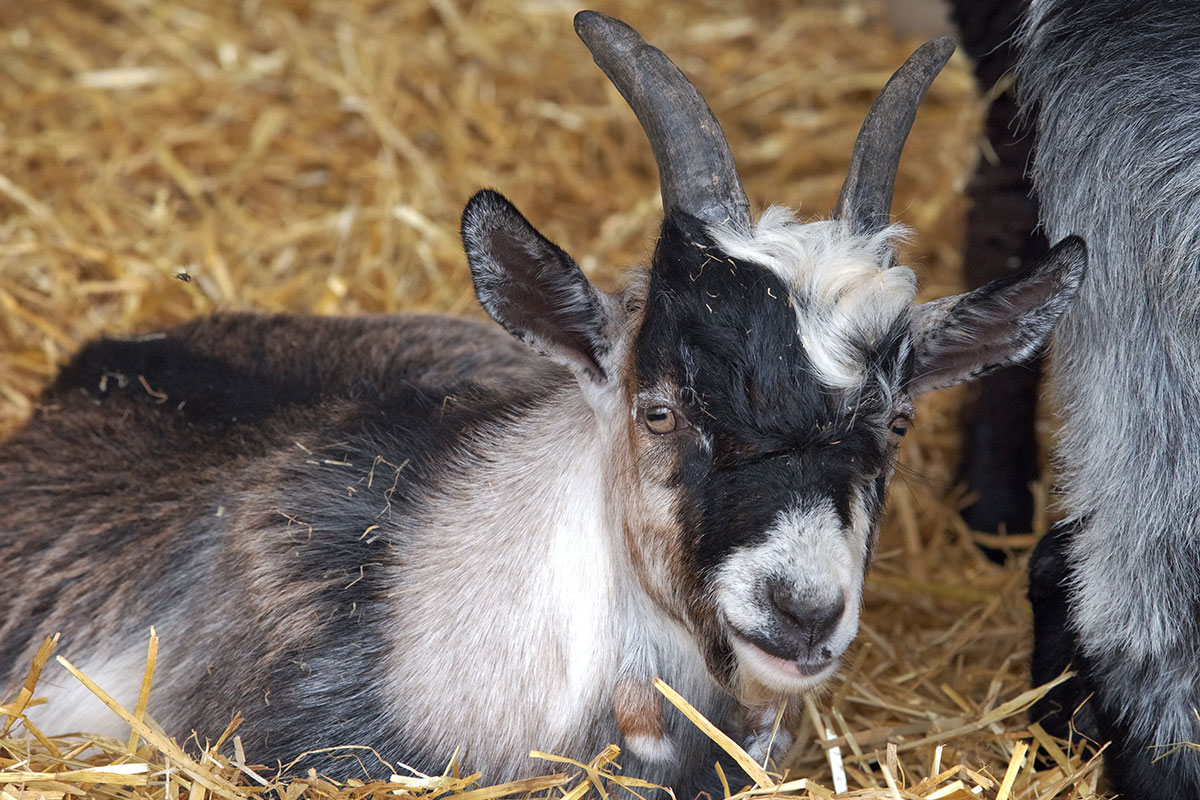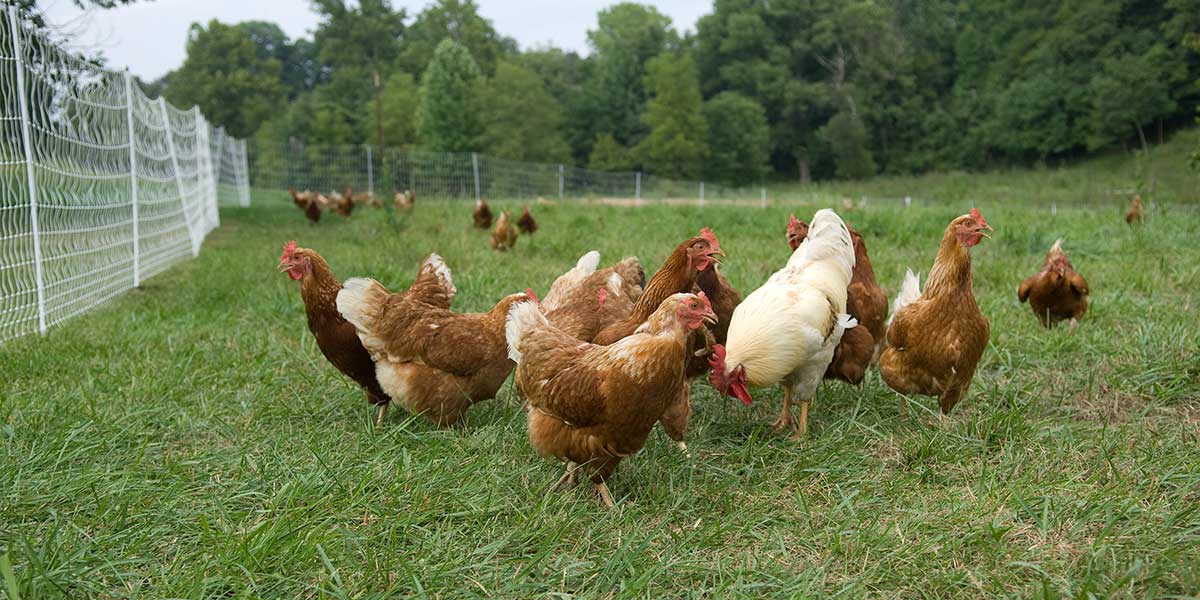
Oh gentle friend, I know not what
Your age may be,
But of my years I’d give the lot
Yet left to me,
To chew a thistle and not choke,
But bright of eye
Gaze at the old world-weary bloke
Who hobbles by.
•
Alas! though bards make verse sublime,
And lines to quote,
It takes a fool like me to rhyme
About a goat.
•
— Robert William Service, “The Goat and I”
For thousands of years humans around the world have kept domesticated goats as livestock for many practical uses, primarily for their meat, milk, wool, and hides. We typically think of them strictly as farm creatures, best suited for animal husbandry and agricultural production. In developed countries like the United States, however, there is a growing trend among non-farmers to keep goats as family pets.
This concept is not as crazy as it sounds. Keeping a pet goat has often been compared to having a dog. And while it is true that goats are fun, funny, affectionate, highly intelligent, and even trainable to leash—not to mention possessing distinct and appealing personalities—there are a number of major differences to consider before taking the leap and purchasing a goat as a pet.
If you have been contemplating adding a new hircine member to your family menagerie, here are a few things you need to know.
First Check Local Zoning Laws
Urban and suburban homeowners may discover that community ordinances disallow the ownership of animals typically considered “livestock” rather than domestic pets. Furthermore, goats can be obnoxiously loud and get into all kinds of mischief in the neighborhood. As a courtesy to your neighbors, find out if they are okay with it as well.
Get at Least Two Goats
A dog is a pack animal that will do well even if it’s the only dog in the house, since it thinks of its owner as “leader of the pack.” Goats, on the other hand, are herd animals. And while a pet goat may consider you to be just another member of its “herd,” for its own psychological well-being it really needs to be around other goats.
Get the Right Size of Goat
If you live in an apartment building, you’re out of luck. Goats require outdoor space to roam and play, so make sure your backyard can accommodate the animals (about 125–150 square feet should be sufficient).
There are over 300 domesticated breeds of goats to choose from. Among non-farm goat owners, the most popular breeds of miniature-sized goats (to be distinguished from the larger “standard” size) are Pygmy Goats, Nigerian Dwarf Goats, and Myotonic Goats. The latter, by the way, are better known as “fainting goats,” due to a non-lethal genetic mutation that causes them to endearingly stiffen up and fall over when startled.
Get Them While They’re Young
In order to forge the strongest “herd” bond with your animals, buy them while they’re still babies. A good age for purchasing a newborn kid is one week old. You will still have to bottle-feed them for a short while (using only goat milk replacement, not cow’s milk!), but that effort will pay off in the long run.
Be aware that goats—male and female—are born with the beginnings of horns. But those little “buds” will soon develop into a kind of weapon that presents a risk of accidental injury to themselves, to people, and to other animals. Therefore, while they are still very young, always have a goat-savvy veterinarian surgically remove the horns (in a procedure called “disbudding”).
Gender Matters
Choose females (“does”) and/or castrated males (“wethers”) for your burgeoning herd. Unless you intend to get into the breeding business, always avoid uncastrated males (“bucks” or “billy goats”). Billies tend to be harder to handle, are more aggressive—and they stink to high heaven.
Fence Them In
Naturally curious and always on the hunt for the next tasty morsel to chew on, goats need to be penned in (unless you long for the complete destruction of your gardens, flower beds, and fresh laundry hung out to dry). For miniature goats, a four-foot-high fence should suffice, with enough space inside for them to play in. And the do love to play, especially if it involves jumping on and off things (as their wild, cliff-dwelling ancestors used to do). Just make sure not to place small tables or other elevated surfaces next to the fence, since goats will cleverly use those objects as platforms to leap over the barrier and make their escape.
Care and Feeding
As with dogs and cats, regular visits to the vet are essential for a goat’s long-term health. Interestingly, though susceptible to rabies, goats rarely contract the disease; and there are no medically-approved commercial vaccines available for use in goats. However, they should be vaccinated against tetanus and clostridium perfringens.
Keeping your animals well fed is likely the largest expense you will incur in keeping goats as pets. They are often referred to as relentless “eating machines,” and so they are. Tireless browsers (rather than grazers, like cows and horses), they have huge appetites and love to nibble and snack, all day, every day. And they like variety—so don’t expect them to mow your lawn for you. You must keep them supplied at all times with fresh hay, grain, greens, dietary supplements, and plenty of water.
Goats make great hiking companions, by the way. If you take them out of their enclosure for a walk, it’s generally a good idea to have them on a leash or harness so they don’t scamper away and, more importantly, so as to keep them away from your prize roses—not to mention away from any plants that might be toxic to them, such as ferns, mountain laurel, rhododendron, and azaleas.
What Goes In Must Come Out
Since goats are such prodigious eaters, it follows that they produce equally prodigious amounts of poop. Invest in a good-quality shovel to scoop it up on a daily basis. You’ll have to figure out where to put it all, though. The good news is that goat manure makes a wonderful fertilizer for your garden (and that of your neighbors, if they’ll take it).
A Final Word
Keeping goats as pets is a considerably more complicated and expensive endeavor than acquiring that cute rescue puppy from the pound. But for those with the time, dedication, and resources, it repays the effort many times over in simple enjoyment, companionship, and the unbreakable loving bond that forms between human and goat. This short video illustrates further the joys and challenges involved in keeping goats as pets.
You can learn more about goats in general at our Goat Identification Tags page.






